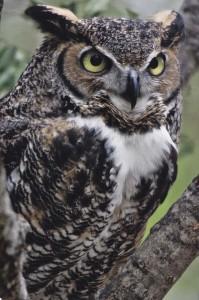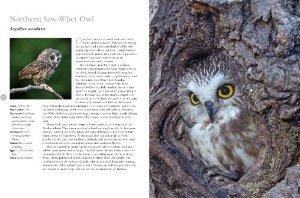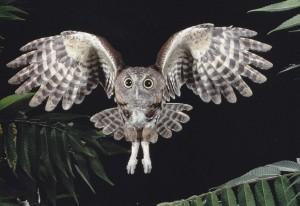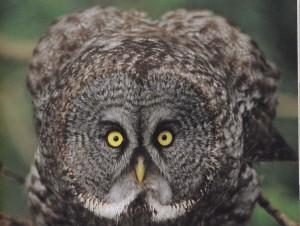Posted by Beth on Tuesday, Jun 18, 2013
Living next door to Oakland Cemetery, the nights in my neighborhood are usually pretty quiet. Unless the Great Horned Owls from Hickory Hill Park are out and about after dark. Then things get interesting. Their calls are enough to send my two indoor cats running for cover under the nearest piece of furniture.
 Not knowing much about Owls, I turned to the ICPL catalog and found a fantastic new book: The Complete Book of North American Owls by Dr. James R. Duncan.
Not knowing much about Owls, I turned to the ICPL catalog and found a fantastic new book: The Complete Book of North American Owls by Dr. James R. Duncan.
This man really knows and loves his owls. The first 47 pages are an introduction to all things owl, from well known adaptations like silent flight and the ability to rotate their heads 180 degrees to each side - and what this adaptation has to do with their eyeballs - to the lesser known but no less amazing ability to rotate one of their three front facing talons almost like a thumb so that they can grip prey with two talons in front and two in back to increase their grip strength.
 The second half of the book is a guide to the 46 species of owls living in North and Central America. Between 3 and 6 pages are devoted to each species. Each essay discusses the species specific nesting habits, hunting techniques, courtship rituals, and calls. A range map and chart containing length (height), weight, wing chord length, and tail length is included.
The second half of the book is a guide to the 46 species of owls living in North and Central America. Between 3 and 6 pages are devoted to each species. Each essay discusses the species specific nesting habits, hunting techniques, courtship rituals, and calls. A range map and chart containing length (height), weight, wing chord length, and tail length is included.
 For me the best part of this book is the collection of photographs of each species. Owls in flight, in their habitats, hunting, or just glaring back at the photographer, these images are amazing.
For me the best part of this book is the collection of photographs of each species. Owls in flight, in their habitats, hunting, or just glaring back at the photographer, these images are amazing.

The book is full of great trivia facts too: One of the worlds largest owls (now extinct) was 42" tall and weighed 20 pounds! And the Great Horned Owl can grip prey with a force of between 300 to 3,000 psi. (A human grip averages about 20 psi.)
The only thing that could make this book any better, would be an included CD with owl calls, but there's always The Owl Pages for that.


Not really an introduction to growing cactus and succulents as much as a home reference guide, this wonderful book can keep you entertained for hours learning about choosing and caring for both indoor and outdoor succulents -Beth